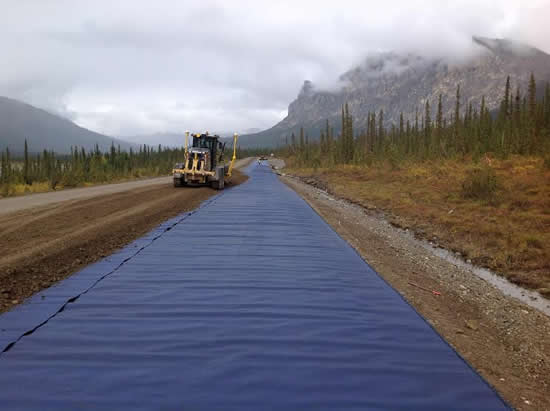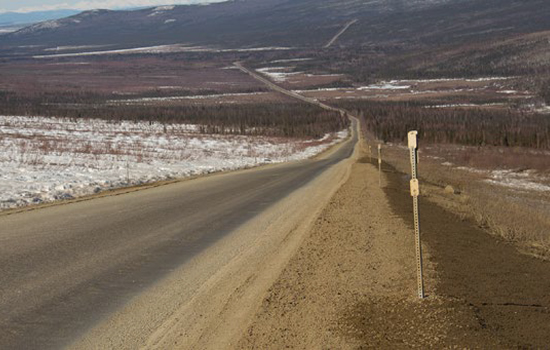The Alaska Department of Transportation brought a specific engineering challenge to TenCate Geosynthetics: the need to enhance lateral drainage from roadway subgrades to minimize frost boils. The company came back not only with a design solution but a very unique geotextile, one which is now finding many different applications. Mark Sikkema of TenCate Geosynthetics discusses the development and uses of this enhanced wicking geotextile.
Listen to “Drawing R&D Inspiration from an Engineering Challenge” on Spreaker.
GeoTalk is published on Tuesdays. Recent episodes:
- August 30: Improving Waterways and Coasts with Geosynthetics
- August 23: Creating Strong Environmental Programs
- August 15:Proper Drainage and Venting of Geosynthetic Barrier Systems
- August 8: The State of Geosynthetics Education
Subscribe on iTunes and in the Google Play store.
We thank Tencate Geosynthetics for sponsoring this week’s episode.

RELATED: 6-Year Update: Frost Heave Mitigation for Alaskan Highway
ENHANCED WICKING GEOTEXTILE
“[The Alaska DOT] presented a very simple problem to us,” Sikkema recalls. “We would like you to just wick water out of a fine-grained soil. If you could do that for us, you’d solve a lot of problems.”

The challenge kicked off a new evolution in TenCate’s geotextile portfolio. The company found a yarn with enhanced wicking capabilities. Through incorporating that yarn into the manufacturing process, the company found not just lateral wicking performance but an ability to pull moisture upward, so even slopes or embankments could benefit.
One of the major installations for this woven Mirafi® H2Ri geosynthetic was along Alaska’s Dalton Highway. The University of Alaska-Fairbanks provided some research support, added instrumentation to a test section.
Theory transferred directly to the field performance. Soon, more than just northern DOTs were incorporating it.
“Engineers have adapted this into a variety of projects,” Sikkema says. “Union Pacific put this in a rail line. … One engineer used it for reducing the hydrostatic pressure of a dam.”

Furthermore, university researchers have become interested and are showing not only a reduction of moisture in the material that sits on top of the enhanced wicking geotextile but the soils or aggregates beneath.
“This is a big deal [for pavement designers],” Sikkema says. “This is another way to extend pavement life by controlling the moisture.”
Learn more about TenCate’s geosynthetic materials and engineering expertise at www.tencate.com. You can also find a lot more about the wicking geosynthetics and their applications at www.mirafi.com.











